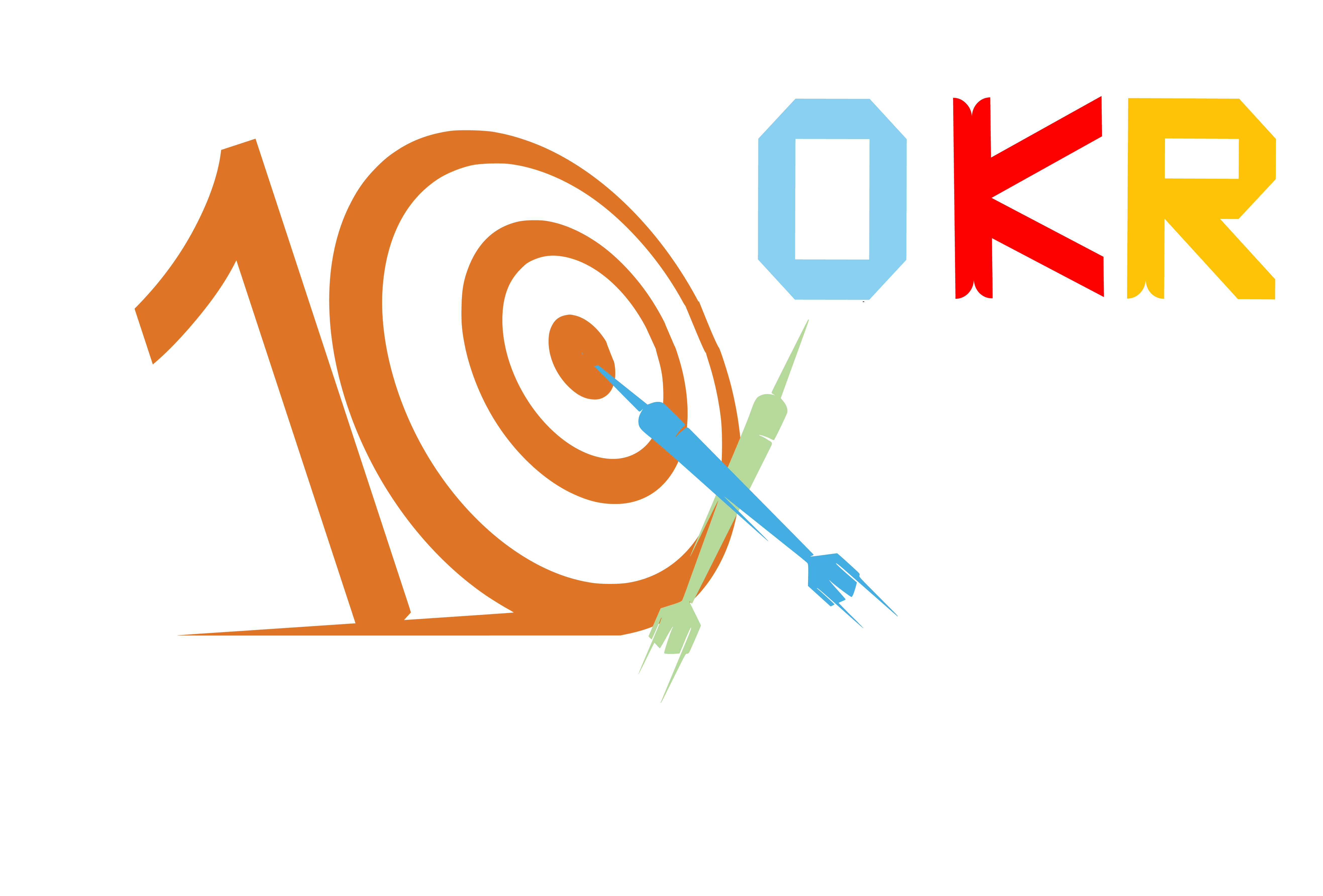Table of Contents
Strategies to Follow for Setting Smart Employee Goals
Familiar with SMART goals??
They are assertions that argue for accomplishing your dreams in a specific achievable way. SMART goals that originated in the November 1981 issue of Management Review are intended to help you focus on what’s important and commit the right amount of time and resources to the most significant tasks.
This system helps you determine success and emphasises the actions you’ll have to do to get there if you have an important task underway.
Five key variables serve to set SMART goals.
- Specific objectives have clearly defined expectations and results.
- Measurable objectives are simpler to monitor and assess.
- Attainable goals can be achieved given the available resources
- Relevant objectives are created for you that make an impact on your business.
- Time-based goals are constrained by a specific time frame.
Make sure that all 5 criteria are fulfilled as you establish goals for your team. Though they are overly broad, pay attention to them! Strive to divide them into manageable stages while keeping the outcome in mind.
Applying employee objectives
How do you start teaching your employee about setting goals for their work?
In this blog, you can get to know about a few of the top tips.
Organise the entire team.
If you want to see our team, they must be completely conscious of what SMART goals are and how they function. Establishing training, meetings and check-ins to motivate your team might involve work, but you’ll generally realise that the effort is rewarding. The team is more likely to function at higher productivity levels when everybody has clarity on the rules and expectations.
Give illustrations
What better way to carry out a significant change than to set an example for other people? Your team will have a simple way to assess their progress and comprehend how they fit in with your priorities if you are truthful and forthcoming about how you set and organise your SMART goals.
Create a shared calendar.
Creating a schedule accessible to everyone in the team is another excellent method to keep everyone on the same boat. Everyone can see progress by sending frequent updates as the SMART goal plan develops and maintaining an open calendar. Also, this will encourage continual goal assessments, criticisms and modifications.
What does success look like? Do you use it to evaluate your product to fulfil them? For instance, do you prioritise your job completion rates over time-based measures? The right metrics can be difficult to pick, but your team members will likely work to their standards without them.
Modifications based on feedback
Don’t forget to consult with your employee on the SMART goal system both during installation and after it has been implemented. Every bit of feedback is important, whether it is an unsolicited enquiry in the hallway or a formal, anonymous satisfaction survey. A small thing which you might have ignored or considered insignificant does have a big impact on how productive your team is.
Setting up SMART goals with OKR
OKRs can be developed at different levels, like an individual, team, department, and corporate group. They can be aligned top-down or bottom-up based on the company’s requirements. The planning activities for the goal-setting process provide latitude to different departments and teams to define OKRs with a condition for aligning them with corporate OKRs. Guarantees two things: In addition to allowing other groups more autonomy and job satisfaction, it also ensures that the corporate goals are cascaded down. Hence, they have a better chance of accomplishment.
Spreadsheets have been utilised to track OKRs from the early days of computing, and small teams (10 or fewer) continue to operate them to plan their OKRs. Spreadsheets have been used to track OKRs since the early days of computing, and small teams (ten or fewer) continue to utilise them for planning their OKRs. However, a serious organisation or any user—CXOs, Department heads, Managers, or Individual contributors—would not benefit from implementing OKRs using spreadsheets.
Teams may stay productive and perform with concentration and alignment using excellent, easy OKR software. Team members can spend valuable time defining stretch goals, innovative methods to achieve them, a strong “Conversations, Feedback and Review framework” to boost employee engagement, and emphasising execution rather than worrying about the issues with spreadsheets.
Most managers adhere to a tried-and-true set of practices when setting objectives to make them SMART. They have one-on-one meetings with their employees to establish goals. At the end of the year, they assess performance concerning those goals and tie that evaluation to decisions about bonuses and raises.
Here are a few goals and objectives for employee performance.
Goals for collaboration
People are more successful when they cooperate to accomplish the team’s objectives. Collaboration offers a variety of advantages. Additionally, diverse teams’ work quality improves, they are more inventive in their problem-solving, and they teach one another how to perform tasks more successfully, increasing the team’s general productivity and motivation.
As an illustration of a SMART goal, by October 15th, assist Joanne with planning the Q2 newcomers’ sales training.
- Specific: Help with planning sales training,
- Measurable: One training session will be held for new employees joining the business in Q2.
- Achievable: The employee must schedule the training, invite the new hires, and conduct the training. Joanne will have assistance with the organisational work and is qualified in the field.
- Relevant: The event will teach newcomers how to be more effective sales reps.
- Time-based:goals must be completed by a particular deadline.
Goals for Professional Development
How have your skills evolved when you started your first job? Many hours of guidance, practical work on real projects, and a constant drive towards honing your skills can render you more appealing in an increasingly competitive field.
Example of a SMART Objective: By the end of the year, get licenced as a professional coach.
Specific: To become a coach, complete the course and pass the exam.
To get the certificate, you must complete the necessary training, do the essential coaching sessions, and pass the exam.
- Measurable: To obtain the certificate, you must complete the required training, attend the necessary coaching sessions, and pass the exam.
- Achievable: The employee is eager to earn this accreditation and is prepared to put in much effort.
- Relevant: Acquiring this qualification will improve one’s standing, reputation, and interpersonal abilities.
- Time-based: By the year’s end, the certification must be obtained.
Self-Control Objectives
Accountability, focus, adaptability, organisation, planning, stress management, and time management manifest effective employees’ self-management qualities. When you’ve mastered these abilities, you can progress in your line of work by carrying out the requirements on your own accord.
A SMART goal is this: Perform three Pomodoro sessions each day for the following weeks while maintaining track of the time spent on these activities.
- Specific: Use the Pomodoro technique and use time tracking at work.
- Measurable: Keep a time log over the next 10 days and work intently to complete three Pomodoro sessions.
- Attainable: Use the Pomodoro technique to track focus and time spent at work.
- Relevant: The method to accomplish more and increase staff productivity has been examined by time management specialists.
- Time-bound: The employee must try the new hobbit within the next two weeks.
Creativity Objectives
Creativity is an indication of your capacity to carry out several tasks successfully. Consider how you can handle your leaves of absence: on paper, using Google Sheets or Excel spreadsheets, or with a programme that takes care of everything. Thinking creatively aids in providing novel solutions to persistent problems.
Create goals for the new website, develop a timeframe, assign tasks and responsibilities, and collaborate with the marketing and design team to analyse the previous website and what is working. You should also identify areas that need improvement.
Improve our online communication with our target audiences about our core services.
Objects of People Management
Your skills in people management reveal that you are a team player, communicate smoothly and have learned how to promote others, whether you are an employee or a manager. Likewise, it supports goals for developing transdisciplinary abilities that let you cooperate with many organisational divisions.
It is crucial to have effective people management abilities when working with coworkers; otherwise, you’ll notice that they’ll quit, whine, or be stressed. You don’t want to be something other than that kind of manager; instead, you want to increase morale, move the team forward, help each member develop, and have fun.
Conclusion
The interrelatedness of the above skills and goals is their beauty. You may have noticed that several employee performance goals involve self-reflection.
Every person wants to reflect on themselves to advance personally and professionally. It enables you to identify your assets and potential improvement areas.



